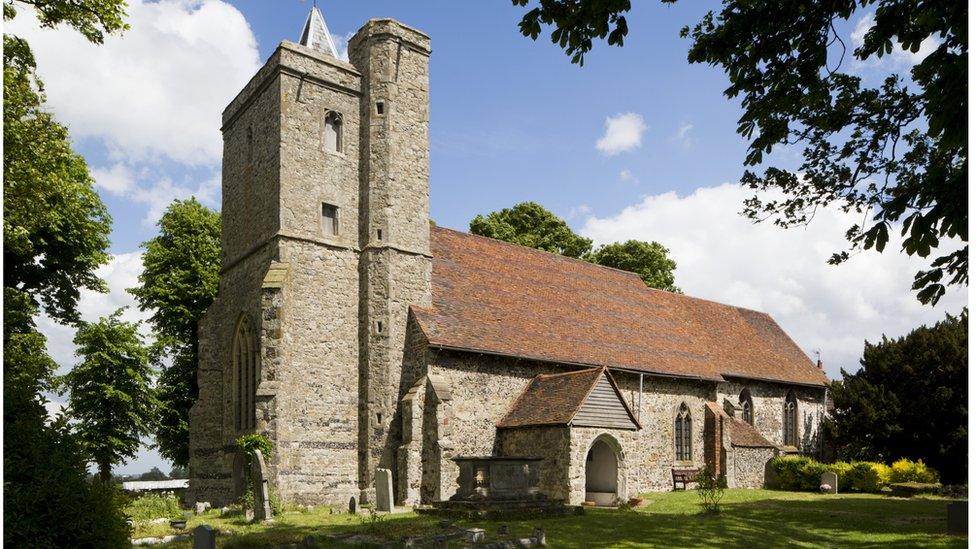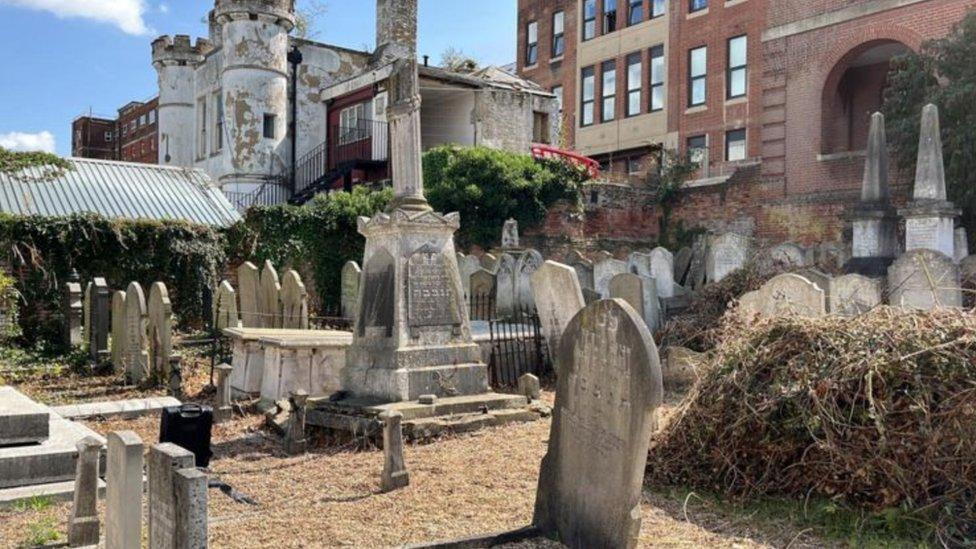AI could be used to stop vandalism of historic sites
- Published

New research has found historic sites experienced an increase in attacks over the past year
Artificial intelligence (AI) could be used to stop vandalism on historic sites.
Research published by Prof Robin Bryant found an increase in the defacement of churches, castles and monasteries in an area of Kent.
Mr Bryant, from Canterbury Christ Church University, believes AI could be used to "link offences together".
It is hoped the technology could identify offenders by tracking tags and matching graffiti in other areas.
The new research, funded by Historic England, and published by Mr Bryant, who is director of criminal justice practice at Canterbury Christ Church University, analysed crimes recorded over a four year period across Kent and Medway.
It found 8% of all recorded crime and anti-social behaviour occurs within, at, or close to, a protected heritage site.

Chatham Memorial Synagogue in Rochester was targeted by vandals in August
Mr Bryant said: "Our best estimates suggest that currently approximately one in five listed buildings and one in four places of worship in Kent and Medway experience some form of crime each year.
"AI offers the possibility to link offences together to the same offenders. In classic policing terms, this is normally a very good start in terms of an investigation."
'Exciting opportunity'
Mark Harrison, head of heritage crime at Historic England, said the research presented an exciting opportunity to investigate graffiti within the "historic environment".
Mr Bryant is working alongside Mr Harrison on a project which could see supervised machine learning.

Follow BBC South East on Facebook, external, on X, external, and on Instagram, external. Send your story ideas to southeasttoday@bbc.co.uk, external.
Related topics
- Published24 August 2023

- Published22 October 2010